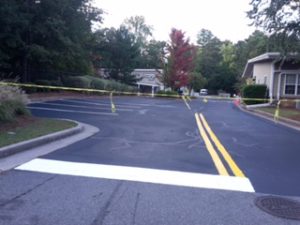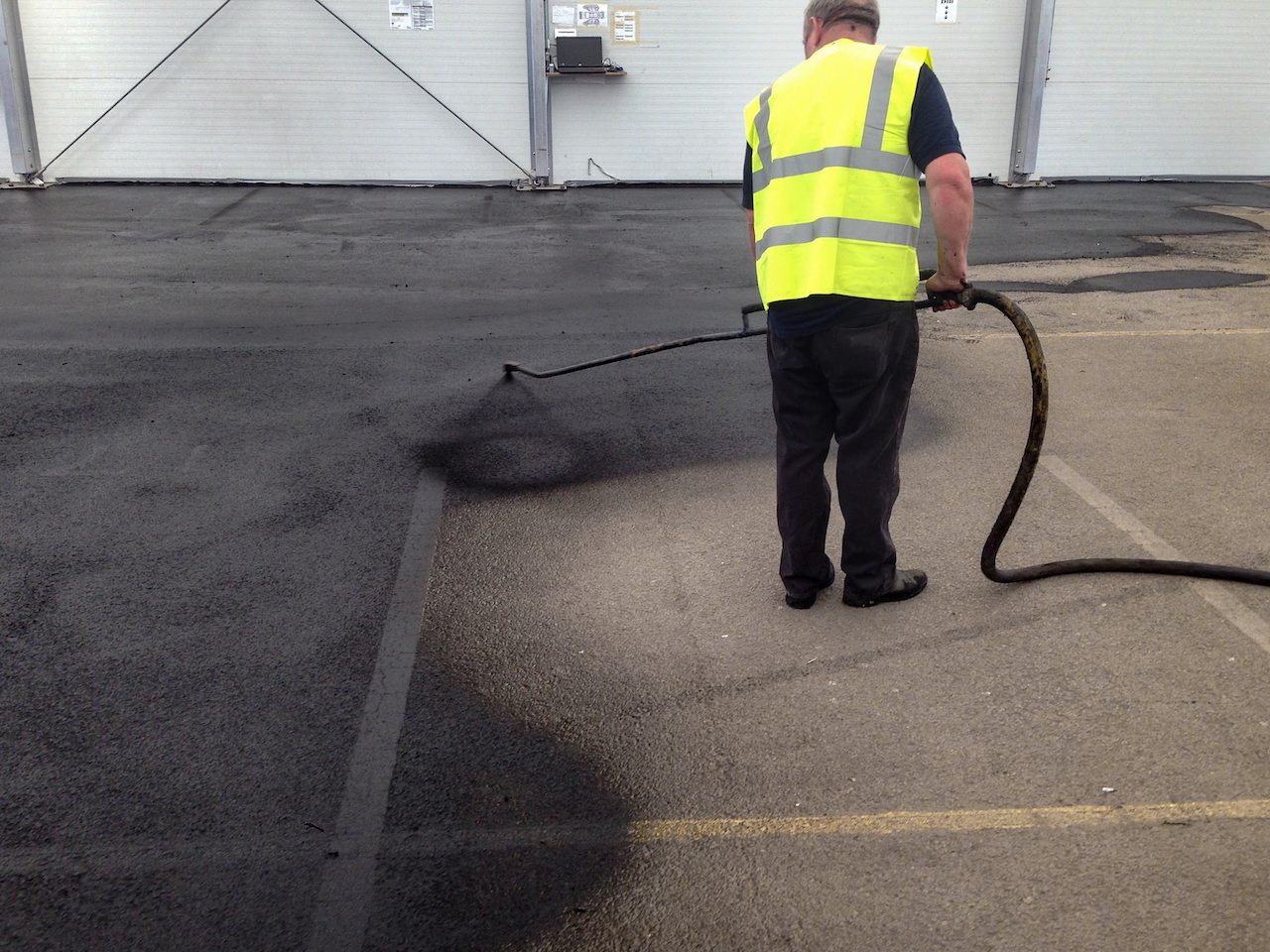
Sealcoating: Causes & Failures – Common Reasons for Failure of Your Sealant
When sealants are properly applied, they establish a bond with the pavement and dry to a hard, protective shell. Anything that interferes with the formation of this bond can lead to rapid deterioration of the sealant. The sealcoating may peel or flake in certain spots or turn into a powder that simply blows away.
• One of the most common reasons for sealcoating failure is that the contractor did not clean the pavement sufficiently. Tree sap, grass clippings and dirt must be removed; this may involve pressure washing, air blowing, wire brushing or scraping.
• While cleaning the pavement, the contractor should also pay special attention to oil spots. Oil is one of the worst materials for bonding, so the spots should be meticulously cleaned. It is often necessary to apply a primer to oil stains to ensure an adequate bond.
• Primer may need to be applied to certain high-traffic areas or to pavement that is old and highly oxidized. Older or well-worn pavements may lack the roughness that sealcoating needs for adequate bonding. It may also be necessary to apply primer if there are rust spots on the pavement; rust spots usually occur when the aggregate in the asphalt pavement contains pyrite.
• New asphalt pavement should not be sealed immediately as excess oils need time to escape. Just like oil spots, the excess oils will prevent the sealant from bonding. Your contractor can tell you when it will be possible to sealcoat the new pavement; the weather conditions since the pavement was installed and other factors influence the decision, but in most cases, you need to wait at least 60 days before sealcoating a newly built pavement.
• Atlanta sealcoating can fill in small imperfections in the pavement’s surface, but it is not capable of repairing damage. If there are cracks or potholes in the pavement, they must be properly repaired before the sealant is applied. If alligator cracking has occurred, the contractor must determine whether the pavement’s base has been destabilized before deciding how to repair the alligatored area. If sealcoating is applied without first repairing damaged areas, the sealcoating can fail quickly.
Selecting a reputable, experienced professional is the best method of avoiding an asphalt sealcoating job that will fail prematurely. MH Greeson Paving is an asphalt sealcoating contractor based in Marietta, GA and we are known for providing work that looks better and lasts longer, delivering extraordinary customer service and charging affordable rates. In addition to sealcoating, we also offer parking lot striping, asphalt crack sealing, asphalt repair, bollards, traffic signs and car stops. If you have more questions about Sealcoating: Causes & Failures, or would like a free quote, submit our online form or call (770) 335-2983.




